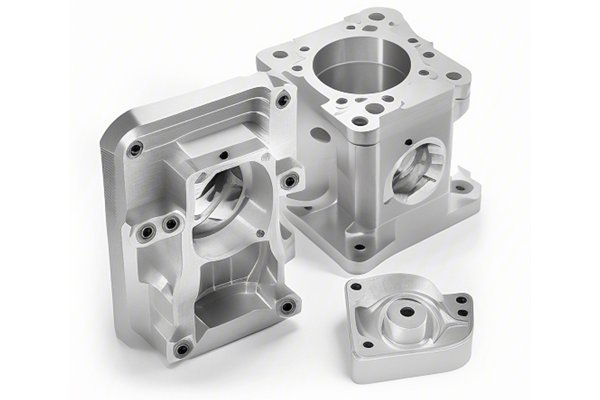Did you know that an estimated 30% of material is wasted during conventional machining processes? For manufacturers working with costly materials like brass, this figure is alarmingly high and can significantly impact overall production costs and efficiency. Reducing material waste not only helps businesses save money but also contributes to sustainability efforts and a greener manufacturing environment.
In this comprehensive blog post, we will delve into how CNC (Computer Numerical Control) machining can play a crucial role in minimizing material waste during brass machining processes. We will explore innovative strategies, advanced technologies, best practices, and real-world examples that underscore the importance of waste reduction in CNC machining. Let’s embark on this journey towards a more efficient and sustainable future.
Understanding Brass and Its Machining Challenges
Brass is an alloy primarily made of copper and zinc, renowned for its excellent machinability, corrosion resistance, and aesthetic appeal. It is widely used in various applications, including plumbing, electrical connectors, automotive components, and musical instruments. However, machining brass presents unique challenges:
Consequently, addressing these challenges is vital for manufacturers aiming to optimize their brass machining processes and maintain competitiveness in the market.
The Role of CNC Machining in Brass Machining
CNC machining has revolutionized the manufacturing landscape by providing unparalleled accuracy and repeatability. Let’s look at how it can help reduce material waste during the brass machining process:
CNC machines utilize computer programming to control their movements and cutting tools, allowing manufacturers to create highly precise components with minimal excess material. This precision ensures that the parts are machined to their exact specifications, reducing the likelihood of scrap caused by inaccuracies.
Advanced CAD/CAM (Computer-Aided Design/Computer-Aided Manufacturing) software helps in generating optimized tool paths. These tool paths are vital in minimizing the distance a machine has to travel between cuts, significantly reducing the time and material wasted. More efficient tool paths also help in decreasing the number of setups needed for a machining operation.
CNC machining can implement adaptive machining techniques where the tooling adjusts dynamically based on the material being cut. For example, real-time monitoring can help adjust feeds and speeds according to the tool’s performance, minimizing excess cutting.
CNC machining waste often consists of metal chips that can be recycled. By setting up processes for recycling these chips, manufacturers can reintroduce valuable materials back into their production processes, further enhancing sustainability. Implementing effective waste management systems will not only reduce costs but also contribute to a greener environment.
Selecting the right material for the application is crucial for reducing waste. CNC machining allows for the exploration of alternative brass alloys or even composite materials that might offer similar properties with reduced waste during machining.
Techniques to Reduce Material Waste in CNC Brass Machining
Here are some detailed strategies that can be employed to minimize material waste when machining brass on CNC equipment:
Effective design is at the core of minimizing waste in machining. Implementing DFM principles involves:
Using virtual simulation tools can help manufacturers analyze the machining process before physical production. Here’s how simulation contributes to waste reduction:

Investing in high-quality cutting tools specially designed for brass machining can significantly reduce waste. These tools can:
Lean manufacturing emphasizes eliminating waste in various forms, and implementing these principles during CNC brass machining can yield substantial benefits. Key strategies include:
Modern CNC machines often come equipped with real-time monitoring capabilities. Utilizing these features allows manufacturers to:
Long setup times can lead to wasted material, especially when transitioning between different parts. CNC machines can be programmed to:
Case Studies Highlighting Successful Waste Reduction
Company A: Innovative Brass Component Manufacturer
Company A, a manufacturer specializing in brass components, faced challenges due to high material waste rates of up to 25%. By implementing a combination of CNC machining technologies and lean manufacturing principles, the company achieved remarkable results:
As a result, Company A decreased its material waste by over 15%, translating to substantial cost savings while enhancing sustainability.
Company B: Automotive Parts Machining
Another case was observed in the automotive industry, where Company B produced critical brass parts for vehicles. Initially, their machining processes led to an alarming 20% scrap rate. The implementation of real-time monitoring systems was a game-changer.
Through these changes, Company B managed to improve material efficiency by reducing waste to below 10%.
In the journey toward sustainable and cost-effective manufacturing, reducing material waste in CNC brass machining is critical. Through advanced technologies, strategic planning, and continuous improvement, manufacturers can significantly decrease waste, improve overall efficiency, and enhance profitability.
In this blog post, we explored the role of CNC machining in minimizing brass waste, shedding light on advanced techniques, real-world examples, and valuable insights that can help manufacturers adopt effective waste reduction strategies.
As our global economy shifts towards sustainability and resource conservation, it’s crucial for manufacturers to not only consider cost savings but also understand their environmental impact. Implementing the strategies discussed not only leads to financial benefits but also positions your business as a responsible and innovative leader in the industry.
In conclusion, reducing material waste through CNC machining isn’t just a goal; it’s an essential aspect of modern manufacturing practices. Remember, in a world where resources are finite, being efficient, responsible, and innovative is a recipe for sustainability and success.






